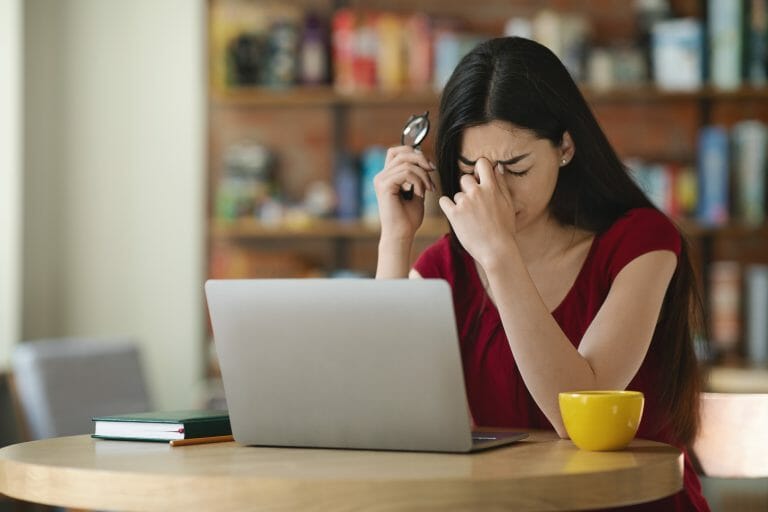We spend most of our awake hours staring at screens, therefore it’s no wonder our eyes are strained all the time.
According to a recent survey conducted by the Office for National Statistics, 72% of grown-ups use a computer every day in Great Britain. While another survey reported that people spend more than 50% of their day in front of a screen. It is more time than we spend sleeping.
While using media or communication devices, we use our sight more than any other senses. Our eyes remain focused on screens for about nine hours a day, and it is taking its toll on the population in the form of eyestrain.
Eyestrain
A study carried out by The Vision Council reported that about 70% of adults in the US suffer from eye problems due to digital eye strain. The stats are the same in the UK as well.
Asthenopia or Eyestrain occurs if the eye muscles work more than they need to, which can lead to tiredness and fatigue of the eyes.
The incorporation of blue-lit screens in computers, iPods, phones, etc., is making eyestrain more of an issue worldwide.
If you have been using any of the screen-based technology for a long time, the chances are that you have experienced eye strain at some point. Symptoms of the eye strain are:
- Dizziness
- Dry eyes
- Headaches
- Itchy eyes
- Double vision or Intermittent Blurry
A survey was conducted in Italy in which 200 banking employees were questioned. It revealed that one of three had experienced eyestrain. Many of the people who complained of eyestrain also said that they had been suffering from job stress. It means that eye strain has physical as well as mental side effects.
Eyestrain or Poor Eyesight
It is easy to mistake eyestrain with poor eyesight because symptoms like dizziness and headaches are also symptoms of sight issues. Eyestrain is quite temporary, and it goes away quite quickly if you take a break from work and stop staring at screens for a day; however, if you experience these symptoms for a long time and feel that it’s hindering your ability to work.

A regular test at any optician will allow you to differentiate between eyestrain and poor eyesight. He/she will also advise you on how to deal with your eyesight problems and prescribe you corrective glasses if needed.
There are several things you can add to your daily routine to keep your eyes healthy. You are taking regular breaks from staring at the computer screen and blinking more often. Moreover, there are some products that can help you relieve eye pain, but it is advisable to use these products under the guideline and recommendations of the eye care professional.
Yoga to Deal with Digital Eye Strain

Eye yoga is designed to engage all six of the ocular muscles that help in eye movement. It helps in focusing and improving flexibility in the vertical and lateral gazes.
It is like training any other body muscle. The more work out you do for a specific muscle, the stronger it gets. Similarly, the more exercise of the eye you do, the more accustomed it will get for movement in different directions and gazes. It will strengthen your eyes for the more demanding environments of today’s digital world.
Practice these exercises both in and out of the office hours to keep your eyes healthy. That blurriness will be banished in no time.
In the Morning
- Look up and down 5-6 times and then close the eyes for 3 seconds.
- Open your eyes, look to the right and left 5-6 times, and close the eyes again for 3 seconds.
- Open the eyes again, look to the lower left and upper right 5-6 times and close your eyes.
- Open your eyes and look to the lower right and upper left 5-6 times and close them again.
- Rub your palms firmly together and place them on the eyes to give them heat.
During the Day
- Sit back and make yourself comfortable in your chair, then move your eyes left and right, up and down, across and in circles. Gradually increase your speed as you go.
- Rub your palms firmly together and lay them on closed eyes until they are warm.
- Repeat this process three times.
In the Evening
- Close your left eye and cover it with your hands, touching the eyelid lightly.
- Blink with your right eye several times.
- Move the right eyelid so slowly that you do not feel any tension of the left eye on your hand.
- Repeat the same procedure with the other eye.
- You can massage your forehead while doing this exercise to release more tension.
Before Bed

- Light a fragrance candle and sit about one meter away from it and make yourself comfortable.
- Stare at the flame until your eyes start to get watery.
- Lie down on your back and relax for 5-10 minutes.


